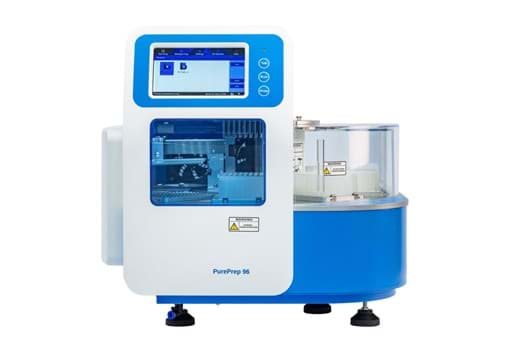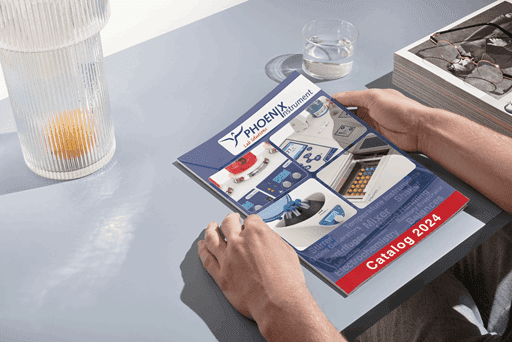
How to optimize qPCR in 9 steps
The road to perfect qPCR.
Learn more about
In summary?
- What is quantitative PCR?
- Why should you optimize a qPCR experiment?
- How to optimize qPCR in 9 steps?
- Save time and choose your workflow wisely.
What is qPCR?
What is quantitative PCR?
One of the fundamental questions in genetic research is: What is the expression level of the gene of interest? Methods like capillary electrophoresis or RNase protection assays are complicated and inconsistent. Moreover, a relatively high input is required. Reverse transcriptase-PCR protocols offer the use of lower inputs of RNA, but analysis remains difficult. For this purpose, researchers embraced the introduction of a fluorescent-based detection method. Quantitative real-time PCR enables amplification and detection simultaneously without running an electrophoresis gel. qPCR has the advantage of measuring the starting copy number and detecting minor differences in expression levels between samplesFrom analyzing the profile of single nucleotide polymorphisms (SNPs) to investigating an array of diseases, we would know nothing about without this technique. Where Next-generation sequencing can generate massive data, qPCR targets specific single DNA or reversed RNA sequences using short templates.
The power of fluorescent signal detection, running multiple samples simultaneously, and using low input start materials offers an accurate, time-saving, and sensitive tool for gene analysis.
Still, a lot of factors influence results. As always, the key to trustworthy results relies on replicates. And this appears to be pretty tricky with qPCR.
Introducing MIQE standards for good qPCR practice didn't simplify a good workflow. Let's look into the steps to optimize your experiment easily.

Recognizing it
Why should you optimize a qPCR experiment?
When starting a qPCR experiment, you need to optimize the workflow. Modifications in the setup also require optimization. I used to say to customers who switched to different PCR plastics, reagents, water, or real-time PCR systems, try it without changing anything in your protocol. If you are the lucky one, you are done in a blink of an eye. If not, then this knowledge topic will save you time figuring the optimization process out yourself. Good laboratory practice dictates keeping everything consistent except for the DNA or RNA template and accompanying primers you are interested in. Consistency is critical to compare different experiments, detect your template accurately, and get your results published. But let's be honest. Sometimes, you want to save money on plastics when a deal comes by, or you need to due to discontinuation. Most importantly, without switching to other products and real-time PCR systems, occasionally, you can't innovate and improve your work.
qPCR is based on the polymerase chain reaction but enables us to follow the reaction by adding a fluorescent dye to the PCR mix and using a system to detect this. Ultimately, this generates a profile—data to answer your scientific question.
SYBRgreen is the most popular not template-specific detection method. The green intercalating dye is easy to use and relatively cheap.
Probes are target-specific templates with various dyes allowing multiplexing. The possibilities to design an experiment are endless, but it means more work on optimizing the probes.
FRET is also probe-based and often used in diagnostics. It is a two-probe system. The stringency provides trustworthy results. Researchers avoid this option as it is challenging to work with.
Like SYBRgreen, EVAgreen is also intercalating but with higher sensitivity and brighter fluorescent signal—a perfect solution when preciseness is necessary.
Optimizing qPCR
How to optimize qPCR in 9 steps?
The workflow is straightforward. We are isolating RNA or DNA from the sample of interest, followed by a purity and integrity check, and finishing with a(reverse transcriptase-) quantitative PCR reaction. In nine steps, this means:- Prepare samples adequately. RNA samples used for the reverse transcriptase step should be the same quantity and quality when comparing gene expression levels. Use qualified collection tools. For example, the innuPREP isolation kits are easy and effective.
- Never skip the quality check. Test the integrity of the purified sample using a bioanalyzer, like the Implen N80, and gel electrophoresis, such as the Compact systems.
- Each qPCR reagent kit or master mix has its composition. Initially, follow the manufacturer's protocol. Subsequently, be consistent and change one parameter at a time.
- Smaller fragments are more tolerant of the PCR conditions. A template of interest between 50 and 200 bp is the most ideal. The reaction will proceed quickly. It is also good to take into account the template's secondary structure. Because with qPCR, the optimal binding of primers and probes determines the progress of the reaction. Therefore, avoid secondary structures that hinder primer and probe binding as much as possible.
- The optimal GC content of primers is between 40%-60%, and it should not contain more than three runs of GC in sequence. Design short and specific primers. Avoiding the consensus of three GC bps in the 3'end of the primer is essential for it to work. The last five nucleotides of the 3'end should not contain more than two Gs or Cs. The optimal melt temperature (Tm) is between 58°C-65°C. In a two-step protocol, 58°C-60°C is recommended. A difference of 4°C between forward and reverse primer works best. If the Tm of the primers is too low, increase the length of the primer. Primers shorter than 28 bp may increase primer-dimer formation and unspecific binding. Use primers of 28bp or larger. It is also vital to generate primers that are as little complementary as possible. You may use BLAST Tool to check this. For designing the primers, the Primer3 is a useful tool.
- Because probes do not affect the progress of the qPCR reaction, the length of this can be between 9-40 bp. To generate the best probe binding, choose the Tm of the probe 10 °C higher than the Tm of the primers. The probe must bind to the template before the primers. The GC content can be between 30%-70%, but we recommend avoiding G or C repeats, especially G repeats. If the probe starts with a G, this often leads to a lower amplification efficiency.
- Optimize the thermocycler protocol one step at a time:
a). DNA templates for real-time PCR are often short. An initiation step of 95 °C for 30 seconds is sufficient for genomic DNA. For cDNA, this is lower. Depending on the DNA template, adjust the duration up to 15 seconds. Adjust time upwards with 1-minute steps for complex or lengthy templates. Remember that modified hot-start polymerases require an initiation step of 10-15 minutes to activate the hot-start property as indicated in the manufacturer protocol. With antibody-mediated hot-start polymerases, a 10-15 minute activation step is unnecessary.
b). Real-time PCR allows DNA detection with a specific or non-specific dye during amplification. The phase in which the signal increases is fundamental for the analysis. During the reaction, the saturation of the dye and polymerase put an end to the signal increase visualized as the so-called plateau phase. Most real-time systems have preset thermal profiles, which, in most cases, are set to a run 40 cycles. It is advisable to stick to this initially, but if the amplification reaches the plateau phase early, reduce the number of cycles (no more than 30) to save time.
c). Often, a short template is used, smaller than 300 bp. For the denaturation step as part of the cycle, 95 °C for 15 seconds is enough. For concise templates, reduce the time up to 5 seconds.
d). The annealing and extension steps are combined to form the so-called shuttle PCR (2-step PCR) in most cases. For linear probes, such as TaqMan, this is required. The 72 °C used for extension is too high, resulting in probe dissociation from the template before the polymerase reaches it, hindering the signal. But also for other probe types and non-specific dyes, such as SYBRgreen I, a 2-step PCR saves time. 60 °C for 1 minute is a starting point. As this is the detection phase, the time here depends mainly on the speed at which the system detects the dye. Optimize it with 0,1 °C steps. If the template is larger than 400 bp or the primers have a tm higher than 60 degrees, we recommend setting the annealing and extension steps separately.
e). When performing a separate annealing and extension step, the annealing temperature is approximately the same as the Tm of the primers but 10 °C lower than the Tm of the probe (take this into account as much as possible when designing probe and primers). The primer Tm of the weakest primer determines the starting point when using unspecific dyes, 55-60 °C 10-20 sec. p As a rule of thumb for the separate extension set1000bp/min at 72 °C. E.g., 450 bp 30 seconds and 150 bp 10 seconds. Again, take the detection speed of the system into account—the extension step may be longer than 30 seconds for some devices.
f). Set the melt curve profile as recommended in the thermal profile of the system or indicated in the reagent protocol. - Are you using an old real-time PCR system? Maybe it is time to replace it. New systems use LEDs instead of light bulbs. LEDs render even light distribution, obsoleting ROX as a corrective reference dye.
- Using white wells with ultra-clear caps or seals improves the performance of the real-time PCR reaction. White wells reduce light distortion from neighboring wells and increase the reflection of the signal for optimal detection.

Our solutions
Save time and choose your workflow wisely
You can do all the above meticulously, spending days optimizing your experiment. Or save tremendous time choosing your tools wisely. Optimize annealing time in one run with the qTOWERiris gradient. With the Linear Gradient, you can set a stepwise temperature increase across 12 columns up to 40 °C. The unique optical fiber LEDs enable optimal uniform fluorescent signals. This low-noise benchtop-friendly system allows fast optimization of QPCR cycling conditions and eliminates guesswork. Combine it with white well plastics and ultra-clear sealing to end any problems with low fluorescent signal or high background noise. Stop any hassle optimizing your master mix with the budget-friendly capital qPCR master mixes.
Want to be sure nothing goes wrong? The Isohelix swabs give the highest yield RNA or DNA after buccal cell collection.
Lastly, don't forget to check the quantity and integrity of your RNA or DNA samples with the Implen NP80 and compact gel electrophoresis system.
qTOWERiris Real Time PCR system, incl. color module 1
qTOWERiris Real Time PCR system, UV ready, incl. color module 1
qTOWERiris touch Real Time PCR system, incl. color module 1
qTOWERiris touch Real Time PCR system, UV ready, incl. color module 1
qTOWERiris 384 Real Time PCR system, incl. color module 1
qTOWERiris 384 Real Time PCR system, UV ready, incl. color module 1
Our news

Innuscreen introduces PurePrep benchtop systems for autom...
Discover the PurePrep family for quick and effective DNA/RNA extraction.

Is more sustainable cell counting possible?
This article discover eco-friendly solutions for cell counting

Introducing Phoenix Instrument: small lab equipment now a...
January 2025 - Phoenix Instrument | Small lab equipment now available at Westburg Life Sciences




